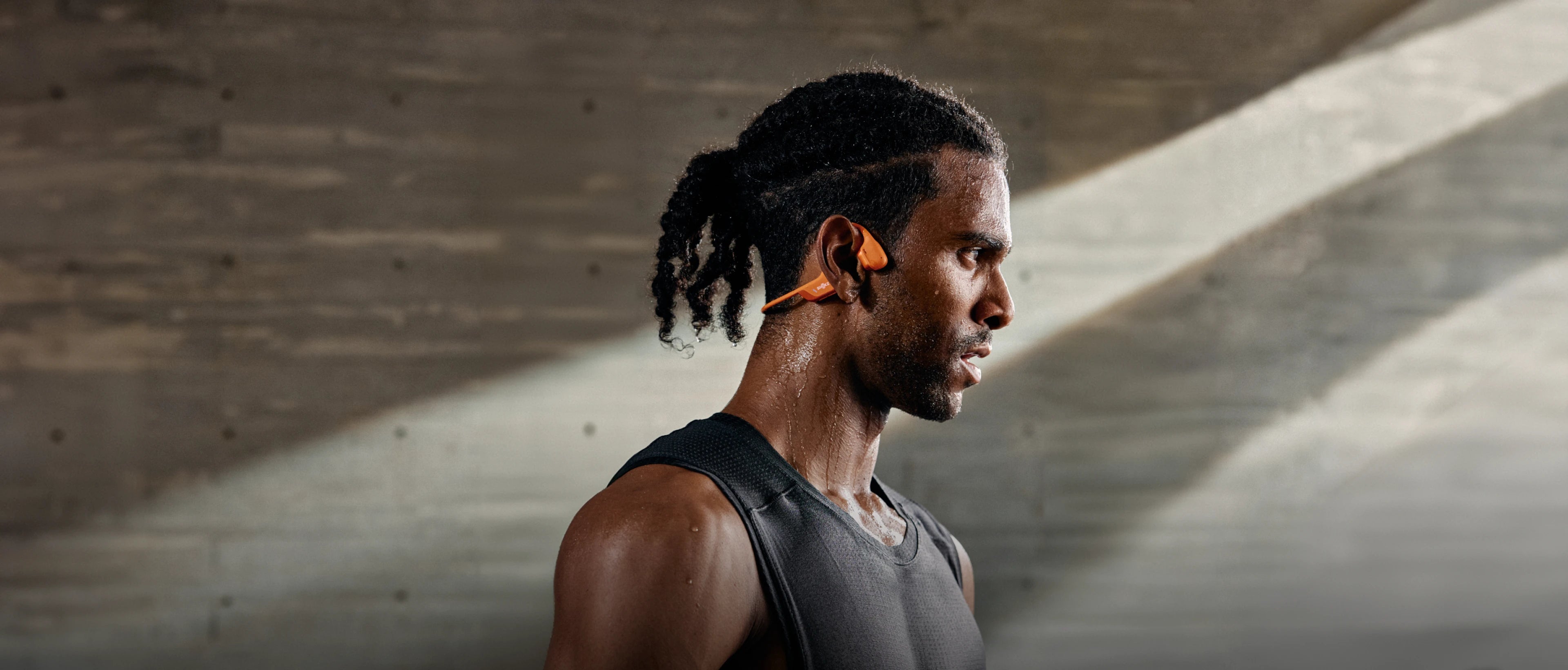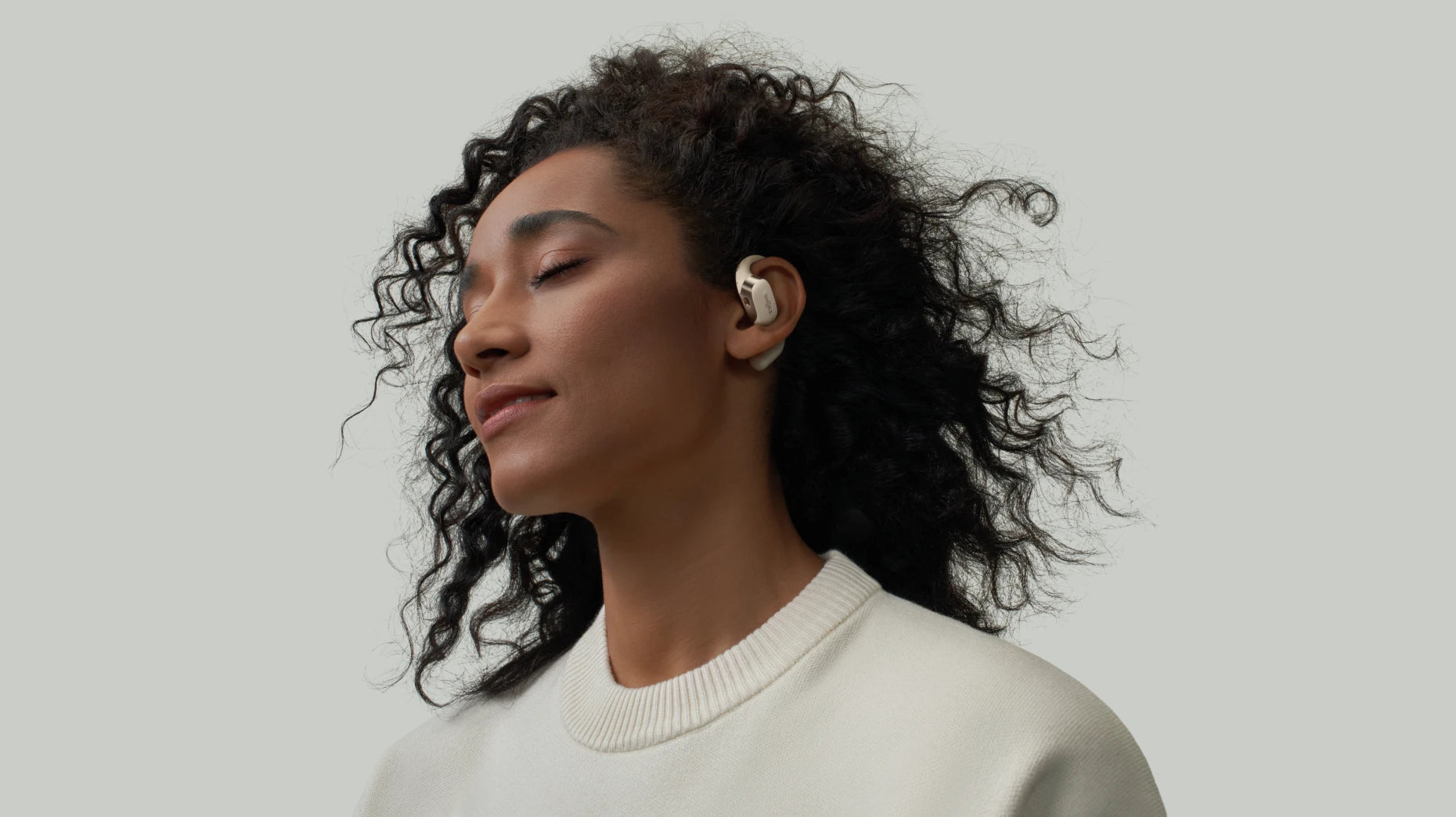How to Wear Bone Conduction Headphones the Right Way: A Complete Open-Ear Fit Guide
Bone conduction headphones are changing how we experience sound, eliminating ear fatigue while keeping us connected to the world around us. But whether you’re jogging, hiking, working, or commuting, knowing how to wear bone conduction headphones properly will ensure maximum performance, comfort, and safety. In this article, we’ll discuss the right way to get that perfect open-ear fit, so you can get the most out of your headphones.
How Do Bone Conduction Headphones Work
Unlike traditional headphones that send sound waves through your ear canal, bone conduction headphones transmit vibrations through your cheekbones and directly to the cochlea, bypassing the eardrum. This allows you to hear clear audio while also keeping your ears open to the world around you.
For years, Shokz has been on the forefront of bone conduction technology innovation, making headphones that combine lightweight design, stability and premium sound quality. Our signature open-ear design offers a unique balance of comfort and awareness, making them ideal for runners, cyclists, and professionals.
Now that you understand how the technology works, it’s time to explore how to wear open ear bone conduction headphones the right way.
Step-by-Step Guide: How to Wear Open Ear Bone Conduction Headphones
To optimize comfort and performance, it’s important that your headphones fit comfortably and properly. Here’s a detailed guide on how to wear bone conduction headphones, no matter the model or style:
Step 1: Identify the Correct Orientation
Most bone conduction headphones feature a wraparound band design. Start by ensuring the band curves around the back of your neck or head, not over the top. The transducers – the devices that convert sound waves into vibrations – should face forward, aligned with your cheekbones.
Step 2: Position on Your Cheekbones
The key difference between bone conduction and traditional earbuds lies in the positioning. Make sure you place the transducers just in front of your ears so they rest on the bony part of your cheeks, not inside or over your ear canal. This placement allows vibrations to travel directly through the bones to your inner ear, delivering clear audio while keeping your ears open.
Step 3: Adjust for Comfort and Stability
Once your headphones are in the right place, you can gently adjust the band so that it feels snug but not tight. You should feel light pressure but it shouldn’t feel uncomfortable. This secure yet relaxed fit helps prevent movement during running or workouts. Most Shokz models, like the OpenRun Pro 2, are ergonomically designed to stay stable, even during intense activities.
Step 4: Test the Fit and Sound
Now it’s time to play your favorite song and see how it feels. If the sound feels muffled or unbalanced, the transducers may not be sitting properly on your cheekbones. To fix this, try shifting them slightly until you find the sweet spot. The goal is a balanced, natural sound while maintaining an open-ear feel.
Step 4: Maintain Ear Hygiene
Be sure to clean the pads regularly to maintain performance and comfort. And because external noise will mix with your audio, keep your surroundings quiet when needed.
Even with the right fit, your accessories and physical movements can affect the degree to which your headphones feel secure. Here’s how to keep them stable in a few different scenarios:
For running and Workouts
These types of activities require stability, not just for comfort and performance but also to keep you focused. When running or cycling, ensure the headband rests lightly around your neck and doesn’t bounce with every step. Some Shokz models offer a titanium frame that flexes yet stays firm. Another way to prevent slippage is to wipe away sweat before wearing, as moisture may reduce grip.
For Working or Commuting
During long work sessions or commutes, comfort is the top priority. Adjust the bands so that it sits gently around your neck without pressing against your skin. The open-ear design allows you to remain aware of any conversations or announcements while still enjoying music or calls.
For Glasses or Hat Wearers
If you wear glasses or hats, position the transducers slightly below or above the temple arms to avoid any interference. Lightweight frames pair best with open ear bone conduction headphones, as they ensure that both accessories fit without undue pressure or friction. It’s helpful to experiment with small adjustments until you find a balanced setup that doesn’t cause comfort.
Common Mistakes to Avoid When Wearing Bone Conduction Headphones
To get the best experience, try to avoid these: common mistakes:
This reduces sound clarity and defeats the purpose of the open-ear design.
This can cause headaches and discomfort
Vibrations can feel too intense in quiet environments.
Testing ahead ensures optimal placement and audio balance before workouts or calls.
When it comes to bone conduction innovation, Shokz has been a perennial industry leader, with over 5,000 patents to date. Whether you’re an athlete, commuter, or work-from-home warrior, Shokz offers models tailored to your lifestyle. Here are some top picks:
OpenRun Pro 2: The flagship model with enhanced bass from DualBoostTM Technology, Quick Charge capability, and comfort that’s built to endure. It’s perfect for marathon runners and fitness enthusiasts who need stable, high-quality sound on the move.
OpenRun: Lightweight and sweat-resistant, these headphones are ideal for everyday use and outdoor activities. They offer superior performance at an affordable price while maintaining our signature open-ear comfort.
OpenDots ONE: These are the smallest, lightest clip-on earbuds from Shokz, combining open-ear freedom with wireless convenience. Perfect for the office or the cafe where awareness and minimalism matter.
FAQs about Wearing Bone Conduction Headphones Correctly
Q1. Do bone conduction headphones need to touch your ears?
A1. No, they should rest just in front of your ears on your cheekbones. The sound travels through bone vibrations, not sound waves, keeping your ears open to ambient sounds.
Q2. How do I adjust my bone conduction headphones if they’re loose or keep falling out?
A2. Tighten the band slightly and reposition the transducers closer to your temples. If you’re sweating heavily or moving a lot, remember to clean the pads to improve grip. The Shokz OpenRun is an excellent lightweight, snug-fitting option that helps maintain a secure fit.
Conclusion
Learning how to wear open ear bone conduction headphones properly transforms your listening experience, ensuring better sound, comfort, and safety. By mastering the correct fit and avoiding the common pitfalls, you’ll be able to take advantage of all the benefits of open-ear audio technology. And as always, trust Shokz for the best in innovation, comfort, and design.


![How to Keep Earbuds from Falling Out? [Guide]](http://shokz.com/cdn/shop/articles/are_open_ear_headphones_better_7d677a26-5d4f-4fb6-8111-ae844090dc38_552x.webp?v=1765348846)





